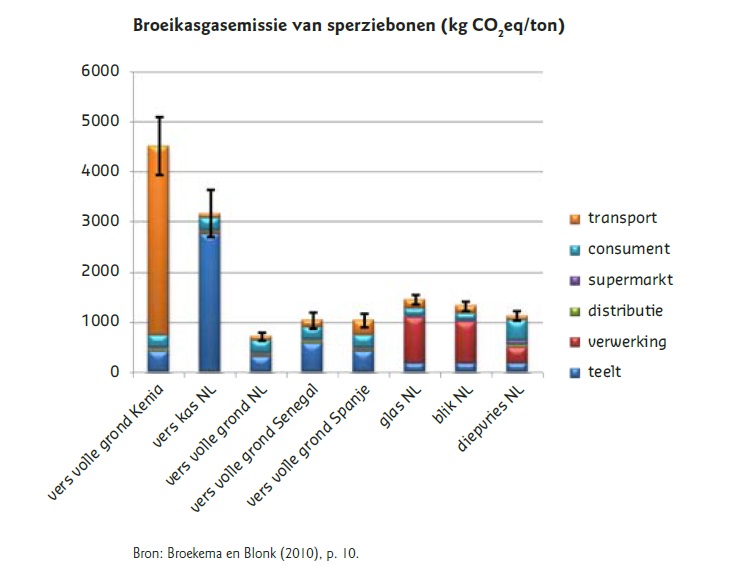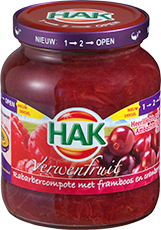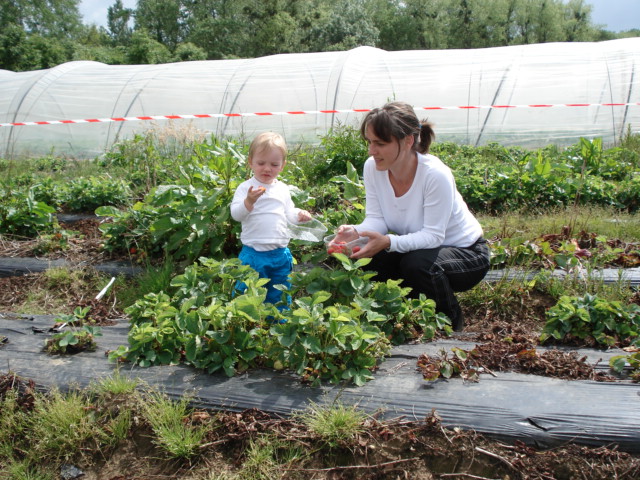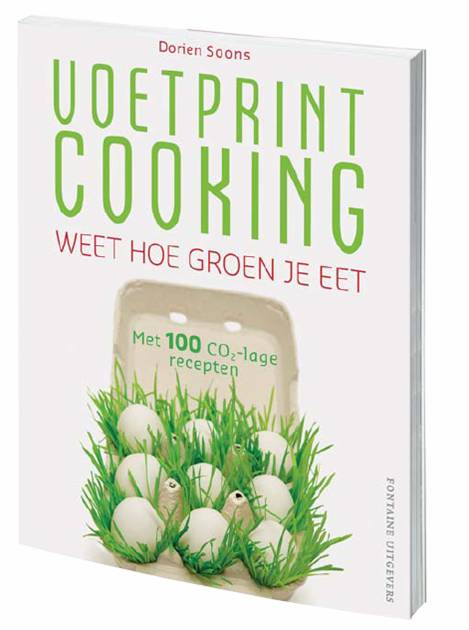Glasshouse
In some months, the supply of fresh vegetables from your own country is so limited that you might even want to buy canned vegetables or glass. The next logical question is, what is the environmental impact and the implications for the vitamins in these canned vegetables.
Environmental impact
A publication [1] shows that the indirect energy (fossil fuel needed for production/cooling/transport/packaging) approximately doubles if “fresh from the country” is replaced by “tin or glass,” but still the high levels are not reached of vegetables from the freezer (approximately 3-fold) or the greenhouse (about 6-fold) [2] .
Example in MJ per kilo:
| indirect energy required |
|
| spinache open ground | 7,6 MJ/kilo |
| vegetables canned | 12,4 MJ/kilo |
| vegetables glass (disposable) | 14,0 MJ/kilo |
| vegetables (frozen, cardboard) | 25,6 MJ/kilo |
| spinache glasshouse | 47,8 MJ/kilo |
| pepper glasshouse in 2000 | 75,0 MJ/kilo |
| pepper glasshouse in 2005 | 67,5 MJ/kilo (correction for assumption: 2% savings/year since 2000) |
| pepper glasshouse in 2010 | 60,8 MJ/kilo (correction for assumption: 2% savings/year since 2000) |
Example in kgCO2-equivalenten: 
Vegetables from the glasshouse (US-spelling: greenhouse)
The greenhouse industry is working on many initiatives to improve the sectors’ sustainablity. For example Nature and Environment and “LTO Glaskracht“ (the branche organization) strive for a reduction in CO2 emissions of 45% in the greenhouse sector in 2020 compared to 1990 [3] .
What has been achieved in the past: The energy efficiency (energy consumption per unit of product) increased in 2005 by 46% compared to 1980 [4] .
The calculations in this cookbook are based on figures from 2000, so it is difficult to determine exactly how much indirect energy is needed to grow peppers at this time. If we were to project the energy-saving measures on the peppers in 2005 (assuming 2% energy savings achieved per year since 2000), we arrive at approximately: (100% -10%) * 75 = 67.5 MJ per kilogram of pepper. Assuming that in the following 5 years similar savings were achieved: this would imply for peppers in 2010: 60.8 MJ / kg.
Vitamins
In pot and canned vegetables are slightly less vitamins than fresh vegetables, but pot and canned vegetables are still an excellent replacement.[5]
[1] Gerbens-Leenes, P.W., Groenkookboek. Groningen: RUG, 2000.
[2] Inmiddels zijn de brongegevens uit 2000 wat gedateerd en is de tuinbouw hard op weg milieuvriendelijker te produceren. Het is dus mogelijk dat de cijfers voor de kas inmiddels zijn gedaald.
[3] Actieplan voor een klimaatneutrale glastuinbouw, St. Natuur & Milieu, LTO Noord, Glaskracht, mei 2007
[4] Actieplan voor een klimaatneutrale glastuinbouw, St. Natuur & Milieu, LTO Noord, Glaskracht, mei 2007
[5] www.voedingscentrum.nl


